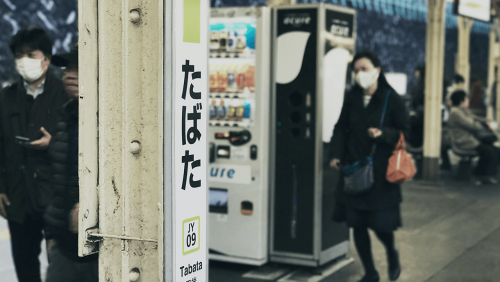Japanese Public Backs Additional Measures to Fight Coronavirus Outbreak

Japan has been one of the countries on the frontlines of the COVID crisis, highlighted by the case of the Diamond Princess cruise ship, quarantined off Yokohama following an outbreak of COVID-19 aboard.
Japan's Coronavirus Measures
The novel coronavirus first identified in Wuhan, designated COVID-19 by the World Health Organization, continues to make headlines around the world. Japan has been one of the countries on the frontlines, highlighted by the case of the Diamond Princess cruise ship, quarantined off Yokohama following an outbreak of COVID-19 aboard. The Japan Times reported that as of February 23, 691 cases of COVID-19 had been identified among the 3,711 passengers and crew, making it the largest site of infections outside China.
The government’s handling of the cruise ship quarantine came under very public criticism this week as Dr. Kentaro Iwata, an infectious disease specialist with experience fighting Ebola and the 2002-2003 SARS outbreak, appeared in a YouTube video calling the Diamond Princess, a “COVID-19 mill.” The public, too, has been critical of the government’s response. In a February 15-16 Asahi Shimbun poll, nearly half of Japanese (45%) said the government had not responded appropriately to the Diamond Princess cruise ship situation.
Concerns are not limited just to the Diamond Princess situation. In polls this conducted the weekend of February 14-16 by news outlets including Asahi Shimbun, Asahi TV, and Yomiuri Shimbun, the Japanese public is concerned and critical. The Asahi poll finds that more than eight in ten (85%) say they are very (42%) or somewhat (43%) anxious about the outbreak’s spread, and half (50%) view the government’s response to the outbreak of COVID-19 negatively. That may because the efforts haven’t been as far-reaching as the public would support. The Asahi TV survey finds that two-thirds of Japanese (66%) support the government taking strict measures to deal with the outbreak, such as the government’s entry ban on travelers who have been to Hubei and Zhejiang in the last two weeks, and Kyodo News finds 64 percent of Japanese in support of the government’s efforts thus far to address the outbreak.
The public is also taking measures themselves. According to the Yomiuri Shimbun poll, 84 percent report they are taking steps to combat contracting the illness (such as handwashing, gargling, and wearing masks). Nearly half of Japanese (47%) say they are avoiding going out into public areas and mingling with other people as a result of the outbreak.
Still, despite fears, the number of infections in Japan outside of the Diamond Princess remains low--147 cases as of February 23--and only four people have died thus far from COVID-19 (one woman in her 80s from Kanagawa Prefecture, and three former passengers from the Diamond Princess, also in their 80s). The more likely casualty of the COVID-19 outbreak is the Japanese economy, already suffering from the effects of the consumption tax increase last October from 8% to 10%. The economic impacts are also on the mind of the Japanese public: in the Asahi poll, nearly nine in ten are concerned about the effects of the outbreak on Japan’s economy (43% very concerned, 44% somewhat concerned). With much of China still under strict quarantine, supply chains dependent on Chinese production are straining to keep up. More economic costs may be coming.

